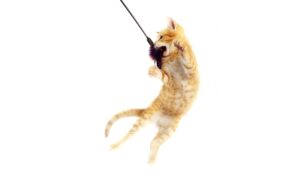Pandemic Puppies: Be the Expert in Puppy Training
Glenn Polyn //September 9, 2020//
With more time at home, many people are adopting or purchasing young dogs and asking “when should I start training my puppy?” Service dog trainers and responsible breeders start working with puppies when they are just three days old. Programs such as Puppy Culture, Early Neurological Stimulation and AviDog outline age-appropriate exercises to complete with puppies while they are still with the mother.
Retailers can establish themselves as experts and develop customer loyalty by providing free educational resources for new puppy owners. Consider establishing an email list to send out training tips and resources. Collaborating with a professional dog trainer to host “Ask the Trainer” sessions in your store can attract new customers as they purchase recommended products from the session.
So what should we be training our dogs as soon as we get them home? While many owners are eager to work on potty training or obedience skills such as sit, down, and stay, there is more to puppy rearing than that.
Confidence is Key
Socialization is a top priority for new puppies. We want to consistently expose our dogs to new stimuli in a wide variety of environments. We must do this carefully and thoughtfully to create a confident and resilient puppy. Allowing puppies to see novel or potentially scary things at a distance and reinforcing them for calm or inquisitive behaviors will create a dog that doesn’t startle easily. We should allow puppies to engage with the items on their owner terms; never pushing the puppy past their comfort zone or flooding them with scary stimuli.
With social distancing suggestions in place for the foreseeable future, it can be challenging to socialize our dogs in ways that we were once guided to. Previous socialization protocols called for playing with lots of different dogs and being greeted or petted by a wide variety of people. While this is not inherently bad, it can create a dog that is overexcited to greet people and dogs. Teaching our dogs to passively observe people and dogs will create a stable temperament with our dogs. Taking puppies to dog-friendly parks, and people-watching is one safe way to get started.
Reinforcing Behaviors
Positive Reinforcement dog training helps build behaviors in our dogs. I’m a big fan of wearing a treat pouch around and reinforcing all of the behaviors I like and want to see continue. For example, if I find my puppy relaxing in the house, I’ll quietly walk over and drop a treat in front of their paws. They may pop up and follow me around after that, but I’ll just wait for another calm behavior before dropping a treat to them again. Similarly, if I find my puppy making good choices around the cat, or choosing to quietly observe the people walking past the front window, or ignoring the plate of food I left on the coffee table, I’ll reinforce all of those good behaviors. Reinforcement by design increases the frequency of the behavior. An alternative to wearing a treat pouch is to have small jars of treats or kibble around the house. Strategically places these jars in locations where problem behaviors may occur, such as the front door, in the kitchen, or near the dining room for quick access. By reinforcing good behaviors, or the absence of problem behaviors early on you are likely to avoid serious issues later.
Obedience Skills
Pet owners are often curious about basic obedience skills. Life-saving cues such as “Come” and “Leave It” are critical cues to teach and can keep the puppy out of trouble. Teach your dog to respond to their name and come racing back to you. A fun exercise to try in a fenced back yard is to call the puppy by name, and then turn and run away from them when they look to you. Reinforce the puppy with a high-value treat when they catch up to you. Leave It should be taught in small approximations. Start with a cookie in one fist. Show the hand to the puppy and say “Leave it.” When the puppy stops investigating the cookie hand, mark with a clicker and reinforce with the opposite hand. Gradually build to being able to set the cookie on the ground without the puppy stealing it.
To find a professional trainer, I recommend checking the trainer look up features at ccpdt.org or apdt.com. Working with a professional to offer educational session or provide written tip sheets for your customers can help establish your retail location as the go-to expert in the area and build customer loyalty.



















